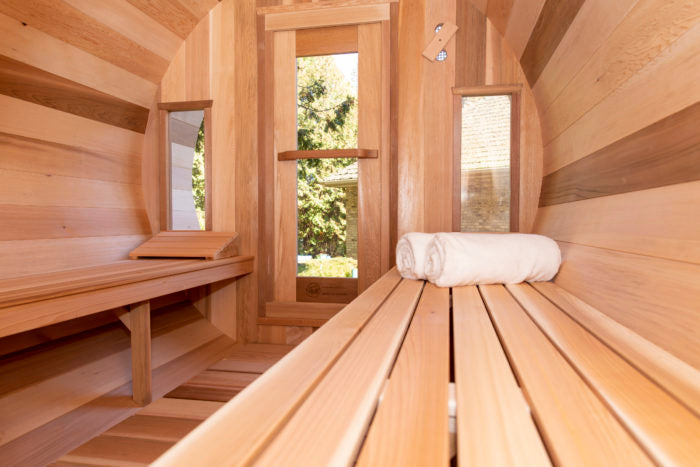About Traditional Sauna
The 4-Minute Rule for Traditional Sauna
Table of ContentsTraditional Sauna for DummiesTraditional Sauna Can Be Fun For AnyoneThe 4-Minute Rule for Traditional SaunaThe Greatest Guide To Traditional SaunaSee This Report about Traditional Sauna
The majority of the weight lost in a sauna is water loss and is re-gained upon rehydrating. Without a question sauna can be a crucial part of a healthy and balanced weight loss program. To consider the differences between typical and IR saunas, I will separate these into proven, theoretical, and made differences.Thus, the best factor in the saunawhich goes to the ceiling straight over the sauna heateris usually between 185 and 190 F. Claims that a typical sauna surpasses 200 F is simply not real and not applicable for electrical saunas sold in the United States. The temperature for a far-infrared sauna is generally established between 120 and 140 F; however, unlike the standard sauna, the objective in and IR room is not to achieve a high temperature level.
Because of this, the temperature level difference is virtually irrelevant, considering that profuse sweating leads to both sauna kinds, but the method of warming the body is different. In an IR sauna the bather will certainly really feel hot and will sweat a lot, yet at much lower temperature levels (Traditional Sauna). Hence, if the goal is to invest longer amount of times in the sauna, the IR sauna is a good option
When a standard sauna has been appropriately heated, the sauna walls are warm, the air temperature has accomplished established temperature level and the rocks are super warmed. As a fascinating side note, the warmed walls and the rocks are emitting far-infrared warm, incorporated with the warmed air, to create an "covering warm".
Traditional Sauna for Beginners

When the high temperature level is attained, the aspects cycle on and off to maintain the heat. Most conventional sauna users delight in putting water over the rocks to create heavy steam to raise sauna moisture levels. The advantages of putting water over the rocks consist of: making the room much more comfortable, moistening the nasal passages, and allowing the usage of aromatherapy by mixing necessary oils with the water.

When the energy goes index into the body, it causes the body temperature level to increase and eventually causes sweating. In an infrared sauna it is very important for the emitters/heaters to continue to be on almost constantly. Because there is no mass of rocks to retain warm, the sauna will certainly cool down if the emitters shut down.
As discussed over, the sauna bather in an infrared room wishes to place himself before running emitters to obtain maximum take advantage of the warmth. The home heating time for the two rooms can be extremely various, depending on exactly how the areas are made use of. For Clicking Here a standard sauna, a bather should allow 30-40 minutes for the space to accomplish a wanted temperature and to appropriately pre-heat the rocks.
Traditional Sauna for Dummies
A well constructed sauna will usually accomplish a temperature of 150-160 F in regarding 30-40 minutes. For hotter temperatures, the room may need to warm for a longer period.

Conventional saunas tend to be larger (therefore make use of even more electrical energy) than infrared saunas, although traditional saunas are definitely readily available in one and two person dimensions as well. For a two-person traditional sauna, 5x6 or 5x7 dimension is most prominent. The top bench can pleasantly seat two or 3 people and is additionally enough time to relax during the sauna session.
Everything about Traditional Sauna
The typical expense per kWH of electricity in the U.S. is roughly $0.11, so a 4.5 kW heating unit will certainly set you back roughly $.50 to run for one hour, if the heater runs continually for one hour. Usually a sauna heater will certainly run for 75% of the initial hour and 50% of subsequent hours on given that the aspects cycle once the established temperature is achieved.

Ultimately, there is a seldom discussed distinction in the social experience between both rooms. While our society has lost a few of the social advantage of the conventional sauna experience, it discover this info here can be extremely socially rewarding (Traditional Sauna). From family time in the sauna, to heart-felt discussions with better halves, to sauna partiesthe standard sauna experience can lead to intimate socializing
10 Easy Facts About Traditional Sauna Shown
A lot of higher end infrared rooms consist of tinted light therapy, sound systems and full-glass fronts.